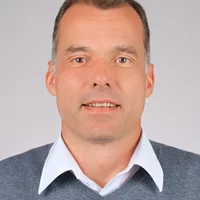PSI: Doktorandentag des Departements Nukleare Energie und Sicherheit 2022.
The Department of Nuclear Energy and Safety (NES) of the Paul Scherrer Institut (PSI) held its annual PhD Day. The PhD students presented their research work to a jury, which awarded the best presentations in each of the various categories with a prize donated by the Nuklearforum Schweiz.
This year Noemi Cerboni and Mario Veicht, first and fourth year PhD students, respectively, of LRC won this prestigious award.
Here a short description of Noemi and Mario's work:
Noemi Cerboni
Preparation of Thin Film Sources of metallic Radiolanthanides for the Measurement of Auger Electron Energies and Branching Ratios
With recent advances in the use of novel radiolanthanides (e.g., 155Tb, 161Tb, 161Ho, …) for targeted therapy with Auger electrons, the request for precise and controlled dosimetry has increased in importance. So far, no experimental data for the energy and branching ratios of Auger electrons from Auger-electron-emitting lanthanides have been reported. One of the main challenges related to such measurements is the production of a uniform thin film of lanthanides in their metallic state. The latter is a prerequisite in order to avoid energy loss of the emitted Auger electrons through self-absorption. This work aims at the thin film deposition of metallic radiolanthanides by means of electrochemistry or noble-metal-assisted reduction.
Mario Veicht
Determining the half-life of 32Si: how PSI is helping to solve a long-lasting problem.
Production of the world's largest quantity of a rare isotope that can be used as a geochronometer.
Radiometric dating is considered an established technique and allows absolute age determinations to be made. However, this requires that the half-life (T1/2) of each nuclide be known with high accuracy. Although various time periods (from a few years to millions of years) can be covered with this method, a dating gap exists, so that the period from 100 to 1000 years before today is not covered. Exactly for this period, however, there is a potential radionuclide that could close this dating gap: Silicon-32 (32Si). The problem, however, is the currently very inaccurately determined T1/2 of 153 ± 19 years and due to this a use for radiometric dating is not allowed.
Therefore, the SNF-funded project SINCHRON (32Si: A New Chronometer) focuses on the redetermination of the half-life of 32Si. For this purpose, 32Si was artificially produced at PSI and a novel, wet-chemical separation system was developed, which allows the selective separation and subsequent purification of 32Si from vanadium disks irradiated with protons. This made it possible to provide a globally unique amount (≈ 20 megabecquerels) of 32Si and thus also samples with exceptionally high 32Si activity. In collaboration with multinational metrology institutes (including the Physikalisch-Technische Bundesanstalt (PTB, Braunschweig, Germany), Institute de radiophysique (IRA, Lausanne, Switzerland) et cetera), various measurements are being performed in order to be able to present in the foreseeable future a new recommended value for the 32Si half-life with a low uncertainty (< 5%). Thus, thanks to the experimental efforts undertaken, the working group of Dr. Schumann (PSI), could make a valuable contribution to the solution of the problem, namely the redetermination of the 32Si half-life.
